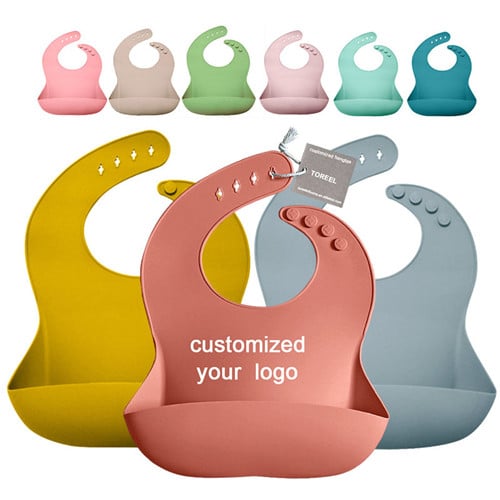What Type of Bibs Are Best for Newborns?
Bibs are an essential item for parents of newborns, helping to keep your little one clean during those first few months. There are many factors to consider when choosing the perfect bib for your newborn(How Many Silicone Bibs Does A Baby Need?), including the material. In this friendly guide, we’ll introduce you to silicone bibs and discuss their benefits for newborns.
Types of Bibs for Newborns
There are several types of bibs available for newborns, each designed to cater to specific needs:
- Drool bibs: These bibs are designed to catch drool and spit-up during the early stages of your baby’s life. They’re typically made from soft, absorbent materials like cotton, muslin, and even silicone. Bandana-style drool bibs are also popular, offering both function and style.
- Feeding bibs: These bibs are used during mealtime to protect your baby’s clothes from spills and messes. They can be made from various materials, including cloth, plastic, and silicone. Some feeding bibs also feature built-in crumb catchers to help minimize messes.
- Waterproof bibs: Waterproof bibs provide an extra layer of protection against spills and are especially useful when introducing solid foods. These bibs can be made from materials like silicone or lined with a waterproof backing(What Is The Best Waterproof Material For Bibs?).
- Sleeved bibs: Also known as smocks, these bibs provide full coverage, with sleeves that protect your baby’s arms and clothing during messy meals or art projects. Sleeved bibs can be made from various materials, including silicone.
Benefits of Silicone Bibs for Newborns
Silicone bibs offer several advantages for newborns:
- Hypoallergenic properties: Silicone is a hypoallergenic material, making it less likely to cause skin irritation or allergies in your newborn.
- Easy to clean: Silicone bibs can be quickly wiped or rinsed clean, making them a convenient option for busy parents. They’re also dishwasher-safe, further simplifying the cleaning process.
- Durable and long-lasting: Silicone bibs are made from a strong, flexible material that can withstand daily use without wearing out quickly. This durability means you’ll need to replace bibs less frequently, saving you time and money in the long run.
- Eco-friendly option: High-quality silicone bibs can last for years, reducing waste compared to disposable or less durable bibs. Additionally, silicone is a recyclable material, making it a more sustainable choice.
- Versatile designs: Silicone bibs are available in a variety of colors and designs, allowing you to find one that matches your baby’s style and personality.
Important Features in Newborn Silicone Bibs
When selecting a silicone bib for your newborn, consider these important features:
- Adjustable and secure closures: Look for bibs with adjustable closures, such as snaps or Velcro, to ensure a secure fit as your baby grows.
- Soft silicone edges for comfort: Choose bibs with soft, rounded edges to prevent irritation on your newborn’s delicate skin.
- Lightweight design: A lightweight bib will be more comfortable for your baby to wear, especially during the early stages.
- Size and coverage: Opt for bibs that provide ample coverage to protect your baby’s clothes from drool and spills.
Tips for Using Silicone Bibs with Newborns
- Proper timing for introducing silicone bibs: Wait until your baby has good head and neck control before using silicone bibs, as they can be a bit heavier than cloth bibs. This usually occurs around three months of age.
- Monitoring for any skin irritation: Keep an eye on your baby’s skin for any signs of irritation or redness, and discontinue use if any issues arise. It’s essential to ensure that the silicone bib is not too tight around your baby’s neck, which could cause discomfort.
- Cleaning and maintenance tips: Clean silicone bibs regularly with mild soap and water, and allow them to air dry. To prevent the growth of mold or mildew, make sure the bib is completely dry before storing it.
- Adjusting the bib as your baby grows: Most silicone bibs come with adjustable closures, such as snaps or Velcro, allowing you to achieve a comfortable and secure fit as your baby grows. Regularly check and adjust the fit to ensure your baby’s comfort and safety.
- Introducing silicone bibs during mealtime: As your baby starts eating solid foods, silicone bibs can be especially helpful for catching spills and messes. The built-in crumb catcher in some silicone feeding bibs can make mealtime cleanup a breeze.
- Using silicone bibs for other activities: Silicone bibs aren’t just for mealtime; they can also be useful during teething, when your baby may drool more than usual. Additionally, consider using silicone bibs during messy play activities, such as finger painting or sensory play, to help protect your baby’s clothes.
- Layering bibs: For extra protection, you can layer a silicone bib over a cloth bib. This combination offers the softness and comfort of a cloth bib while providing the easy-to-clean benefits of a silicone bib.
Silicone Bibs vs. Traditional Fabric Bibs
Silicone bibs have distinct advantages over traditional fabric bibs, such as easy cleaning and durability. However, it’s essential to consider your baby’s unique needs and preferences when selecting a bib. In some cases, a soft, lightweight cloth bib may be more appropriate for your newborn, while silicone bibs might be more suitable as your baby grows and starts eating solid foods.
Related Reading: Are Silicone Or Cloth Bibs Better?
Conclusion
Understanding your newborn’s unique needs is crucial when choosing the perfect bib. Silicone bibs offer numerous benefits, including hypoallergenic properties, easy cleaning, and durability. By considering the features and tips discussed in this friendly guide, you can make an informed decision on whether silicone bibs are the best choice for your newborn, ensuring comfort, protection, and ease of use during those precious early months.
Related Blog
-
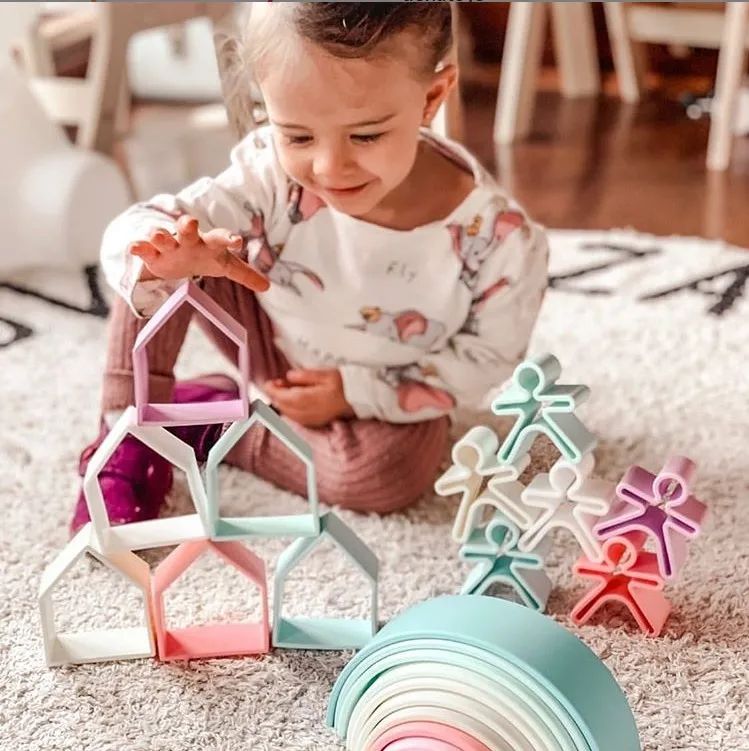
The benefits of playing with silicone toys for babies
The benefits of playing with silicone toys for babies Baby silicone toy is a toy made of silicone material, specially designed for young children. Silica gel is a kind of synthetic rubber, belongs to organic silica gel, with high temperature resistance, cold resistance, non-toxic and harmless, insulation and chemical inertness high characteristics. These characteristics make silicone…
-

What tools can we choose to reduce the chance that our baby will mess up his food
What tools can we choose to reduce the chance that our baby will mess up his food What is the phenomenon when children eat very disorderly Eating is a top priority in a family’s daily life, and parents’ love for their children is vividly reflected at the table. What makes many parents more headache also…
-

How to make silicone baby place mats?
How to make silicone baby placemats? What are the Silicone placemats? Silicone placemats are a kind of dining item that can protect and decorate the dining table. They are made of made of 100% food-grade silicon. Silicone placemats are highly flexible and heat-resistant. They are widely used in kitchen supplies and baby products. They are…
-
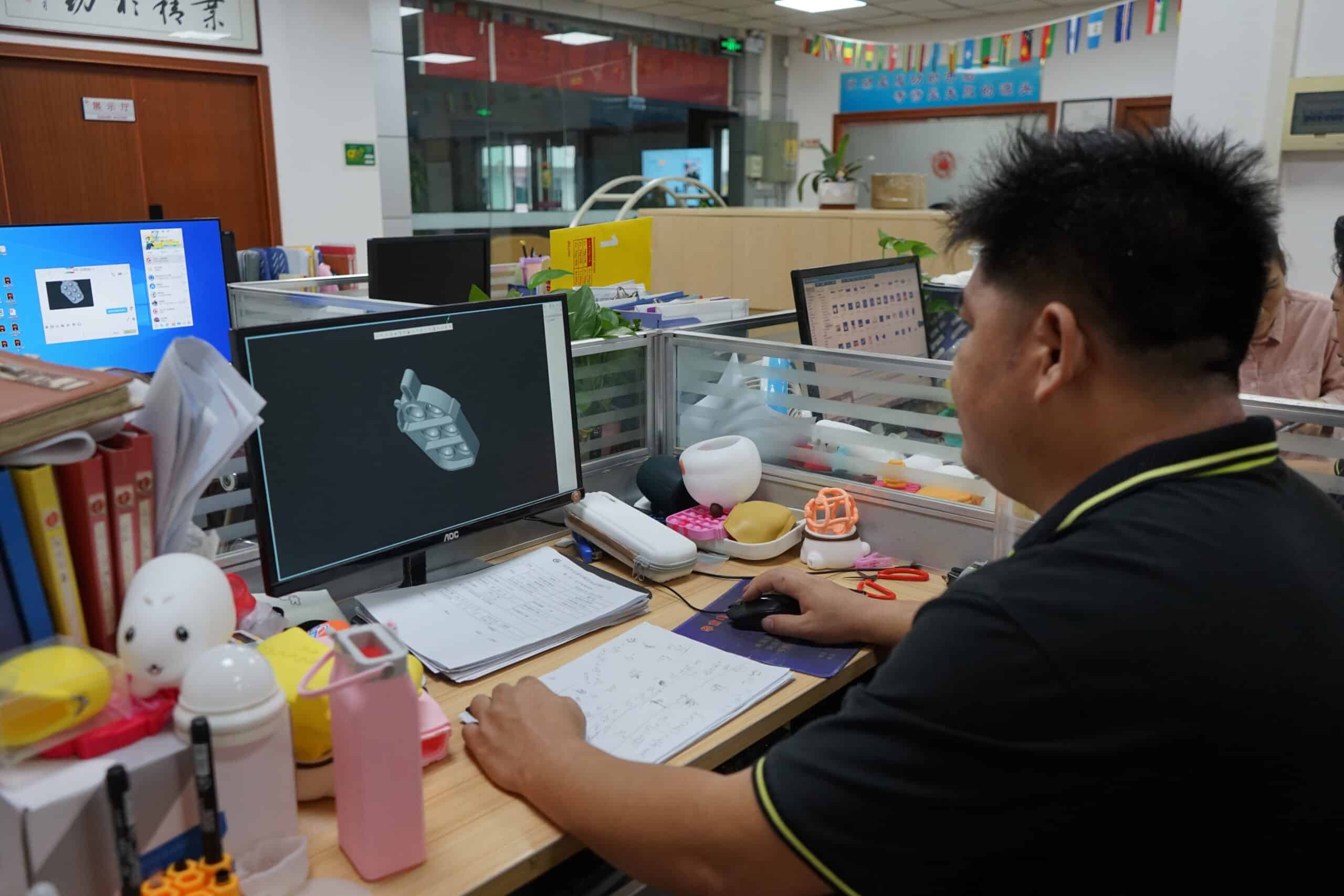
How To Make Silicone Baby Toys?
How to make silicone baby toys? What is the Silicone baby toys? Silicone baby toys are made of made of 100% food-grade silicon. It is designed for the baby. The silicone baby toy is usually soft, safe, and non-toxic, making it very suitable for infants and young children to play. Silicone baby toys are safe,…
-
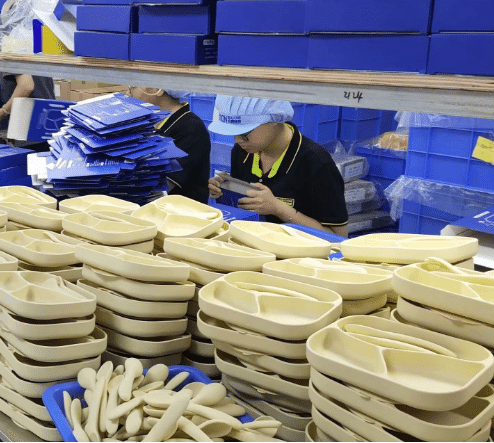
How To Make Silicone Baby Spoon?
How To Make Silicone Baby Spoon? What is the Silicone baby spoons? The Silicone baby spoon is a kind of baby tableware made of 100% food-grade silicone, mainly used for babies to eat complementary food and drink water. Silicone baby spoons are safe, BPA, PVC and phthalate-free, Lead free, convenient waterproof and easy to clean,…
-
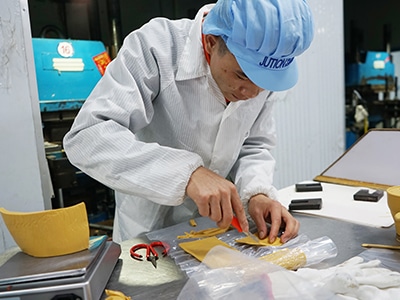
How To Make Silicone Baby Cup?
How to make silicone baby cup? What is the Silicone baby cup? Silicone baby cup are baby products made of is made of 100% food-grade silicone, mainly used for babies to drink water. The silicone baby cup is usually non-toxic, high temperature resistant, low temperature resistant, very suitable for babies. Silicone baby cup are safe,…

